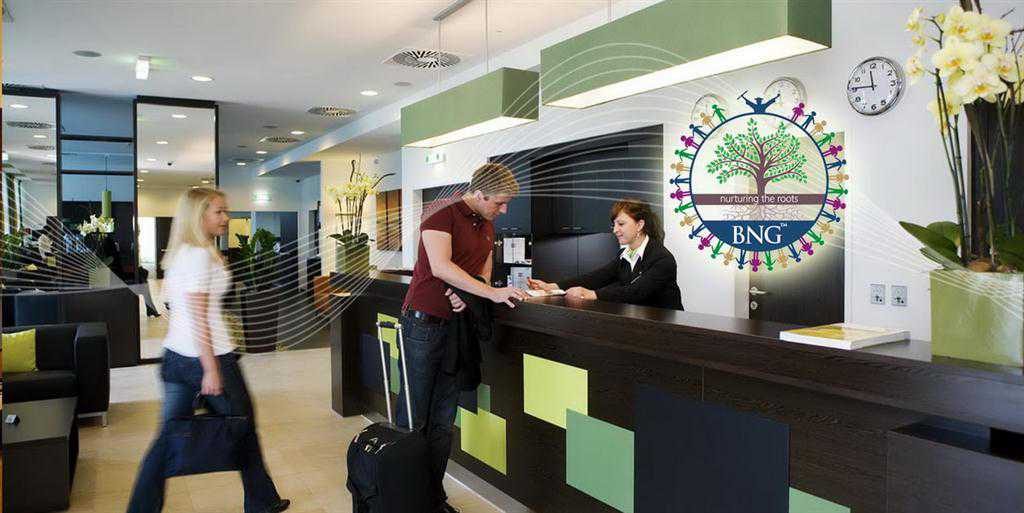Hotel Yield Management
A technique based on supply and demand used to maximize revenues by lowering prices to increase sales during periods of low demand and raising prices during periods of high demand. It is also known as Revenue Management or yield management. The key to successful revenue management is to sell the right product (guestrooms, banquets, ancillary services) to the right customer (business, leisure, convention, government or any other guest) on the right day (weekday, weekend) for the right price (rack rate, corporate rate, or any other discounted rate).
The Concept of Yield Management
The concept of yield management originated in the airline industry. Most travelers know that passengers on the same flight often pay different fares. Super-saver discounts, three-day advance-purchase plans, stay-over-Saturday-night packages, and so forth have become the norm for airline pricing. What is not as widely known is the potential application of yield management to other service industries. Yield management has proven successful in the lodging car rental, cruise line, railroad, and touring industries – basically, in situations where reservations are taken for a perishable commodity. The key to success implementation appears to be an ability to monitor reservations and to develop reliable forecasts.
Yield management is based on supply and demand. Prices tend to rise when demand exceeds supply; prices tend to fall when supply exceeds demand. Pricing is the key to profitability. To increase revenue, the hospitality industry is attempting to develop new forecasting techniques that will enable it to respond to changes in supply and demand with optimal room rates. The hospitality industry’s focus is shifting from high – volume bookings to high – profit bookings. By increasing bookings on low – demand days and by selling rooms at higher prices on high – demand days, the industry improves its profitability. In general, room rates should be higher when demand exceeds supply. They should be lower (in order to increase occupancy) when supply exceeds demand.
Hospitality Industry Application
Hospitality industry companies have a common problem: they produce a fixed inventory of perishable products which cannot be stored if unsold by a specific time. These products are typically sold for varying prices that depends on the time of the transaction and the proposal date of delivery.
In the hospitality industry, yield management – sometimes called revenue management – is a set demand – forecasting techniques used to determined whether prices should be raised or lowered, and whether a reservation request should be accepted or rejected in order to maximize revenue. Hospitality industry managers have successfully applied such demand – forecasting strategies to room reservation systems, management information system, room and package pricing, rooms and revenue management, seasonal rate determination, pre-theater dinner specials, and special, group, tour operator, and travel agent rates.
Managers have noted such benefits as:
1. Improved forecasting
2. Improved seasonal pricing
3. Identification of new market segments
4. Identification of market segment demands
5. Enhanced coordination between the front office and sales divisions
6. Determination of discounting activity
7. Improved development of short-term and long-term business plans
8. Establishment of a value based rate structure.
9. Increased business and profits
10. Savings in labor costs and other operating expenses
11. Planned responses to guest inquiries or requests regarding reservations
Yield management seeks to maximize revenue by controlling forecast information in three ways: capacity management, discount allocation, and duration control.
Capacity Management
Capacity Management involves a number of methods of controlling and limiting room supply. For example, hotels

will typically accept a statistically supported number of reservations in excess of actual room availability in an attempt to offset the effects of early check-outs, cancellations, and no-shows. Capacity management (also called selective overbooking) balances the risk of overselling against the potential loss of revenue arising from spoilage r(rooms going unoccupied after reservations were closed out).
Other forms of capacity management include determining how many walk-ins to accept on the day of arrival based on expected cancellations and no-shows. Capacity management usually varies with room type. That is, it might be economically advantageous to overbook more in lower-priced rooms, because upgrading to higher-priced rooms is an acceptable solution to an oversell problem. The amount of such overbooking depends, on course, on the demand for the higher-priced rooms. In sophisticated computerized yield management systems, capacity management may also be influenced by the availability of rooms at neighboring hotels or competing properties.
Discount Allocation
Discounting involves restricting the time period and product mix (rooms available at reduced prices (prices below rack rate). For each discounted room type, reservations are requested at various available rates, each set below rack rate. The theory is that the sale of a perishable item (the guestroom) at a reduced price is often better than no sale at all. The primary objective of discount allocation is to protect enough remaining rooms at a higher rate to satisfy the projected demand for rooms at that rate; while at the same time filling rooms that would otherwise have remained unsold. This process is repeated for each rate level from rack rate on down. Implementing such a scheme requires a reliable mechanism for demand forecasting.
A second objective of limiting discounts by room type is to encourage upselling. This technique requires a sound estimate of price elasticity and / or the probability of upgrading. (Elasticity refers to the relationship between price and demand.)
Duration Control
Duration control places time constraints on accepting reservations in order to protect sufficient space for multi-day requests (representing higher levels of revenue). This means that, under yield management, a reservation for a one night stay may be rejected, even though space is available.
For example, if Wednesday is close to selling out but other nights are not, a hotel may want to optimize the revenue potential of the last few rooms on Wednesday by requiring multi-day stays, even at a discounted rate, rather than accepting reservations for Wednesday only. similarly, of the hotel will be close to capacity Tuesday, Wednesday and Thursday, then accepting a one-night stay during any of those days may be detrimental to the hotel’s overall room revenue. Hotels facing such dilemmas often require all reservations for projected full-occupancy periods to be for more than one evening.
Measuring Yield
Yield management is designed to measure revenue achievement. One of the principal computations involved in yield management is yield, which is the ratio of actual revenue to potential revenue. Actual revenue is the revenue generated by the number of rooms sold. Potential revenue is the amount of money that would be received if all rooms were sold at full rack rates.
The mathematics of yield management is relatively simple, although several formulas are usually involved. This section is intended to introduce the basic formulations of yield management computations.
Formula 1 : Potential Average Single Rate
It is found by multiplying the number of rooms in each type by its single room rack rate and dividing the sum total by the number of potential single rooms in the hotel.
Potential Average Single Rate = Single Room Revenue / Number of Rooms
Formula 2: Potential Average Double Rate
It is found by multiplying the number of rooms in each type by its respective double-room rack rate and dividing the sum total by the number of potential double rooms in the hotel.
Potential Average Double Rate = Double Room Revenue / Number of Rooms
Formula 3 : Multiple Occupancy Percentage
An important element in determining a hotel’s yield statistic is the proportion of the hotel’s room that are occupied by more than one person, that is, the multiple occupancy percentage. This information is important because it indicate sales mix and helps balance rates with future occupancy demand In the case of the Educational Inn, if 105 of the 210 (that is, 70% of 300) rooms sold are, on average, occupied by more than one person, the multiple occupancy percentage is computed as follows
Multiple occupancy = Number of rooms Occupied by More than One Guest / Number of Rooms Occupied
Formula 4 : Rate Spread
The determination of a room rate spread among various room types can be essential to the use of yield decisions in targeting a hotel’s specific market.
Rate Spread = Potential Average Double Rate – Potential Average Single Rate
Formula 5: Potential Average Rate
A hotel’s potential average rate is a collective statistic that effectively combines the potential average rates, multiple occupancy percentage, and rate spread. The potential average rate is determined in two steps. The first step involves multiplying the rate spread by the hotel’s multiple occupancy percentage. The result is added to the hotel’s potential average single rate to produce a potential average rate based on demand (sales mix) and room rate information.
Potential Average Rate = (Multiple Occupancy% X Rate Spread) – Potential Average Single Rate
Formula 6: Room Rate Achievement Factor
The percentage of the rack rate that the hotel actually receives is contained in the hotel’s achievement factor (AF), also called the rate potential percentage. The achievement factor is found by dividing the actual rate the hotel is currently collecting by the potential average rate.
Achievement Factor = Actual Average rate
Potential Average Rate
Formula 7 : Yield
An important element in yield management is the yield. The yield calculation incorporates several of the previous formulas into a critical index. There are various equivalent ways to express the yield equation.
1. Yield = Revenue Realized / Revenue Potential
2. Yield = Room Nights Sold x Actual Average Room Rate / Room Nights Available x Potential Average Rate
3. Yield = Occupancy Percentage x Achievement Factor
Instead of computing yield as a percentage, some lodging operations prefer on alternate statistic which focuses on revenue per available room (RPAR or REVPAR). The RPAR can be calculated using either of the following equations:
RPAR = Actual Room Revenue / Available Room
RPAR = Occupancy % X ADR
Formula 8: Identical Yields
Identical Yields = Current Occupancy % X Current rate / Proposed Rate
Formula 9: Equivalent Occupancy
A more effective way of evaluating whether a change in room rates is justifiable involves determining an equivalent occupancy. The equivalent occupancy formula can be used when management wants to know; what other combinations of room rate and occupancy percentage provide equivalent net revenue.
The marginal cost of providing a room is the cost the hotel incurs by selling that room (for example, cleaning and supplies); this cost would not be incurred if the room were not sold.
Equivalent Occupancy = Current Occupancy % X Rack rate – Marginal Cost / Rack Rate X (1 – Discount %) – Marginal Cost
Equivalent Occupancy = Current Occupancy % X Current Contribution Margin / New Contribution Margin
Formula 10: Required Non-Room Revenue per Guest
While equivalent occupancy, unlike yield, accounts for marginal cost, both fail to account for changes in non-room revenue due to changes in occupancy. The manager, wanting some clear indication of whether a change in room rate will render more than an offsetting change in non-room revenue, may find an answer using breakeven analysis. This involves calculating or estimating a number of elements.
• The net loss in room revenue due to room rate discounting
• The amount of non-room revenue needed to offset this loss.
• The average amount each guest spends in non-room revenue centers.
• The increase in occupancy likely to result from rate discounting
The breakeven calculation is based on the weighted average contribution margin ratio (CMRw) for all non-room revenue centers. While a detailed discussion of this topic is beyond the scope of this text, a simple formula for determining the CMRw for all non—room revenue centers is as follows :
CMR w = Total Non-Room Revenue – Total Non-Room
Revenue Center Variable Costs
————————————————————
Total Non-Room Revenue
Knowing the CMRw and the average amount that guest spend in non-room revenue and having estimated the probable change in occupancy, the front office manager can then determine whether the net loss caused by discounting room rates is likely to be more than offset by the net gain in non revenue. The formula is as follows :
Required Required Increase in
Non-Room Revenue per Guest = Net Non-Room Revenue + CMRw / Number of Extra Guests
The front office manager can compare the result of this equation with the actual average non-room spending per guest. If this number is higher than the actual average non-room spending per guest, the hotel is likely to lost net revenue by discounting; that is, the additional guests brought in b discounting will not spend enough to offset the net loss in room revenue. If the amount needed per additional guest is lower than the actual average amount spent, the hotel is likely to increase its net revenue by discounting.




